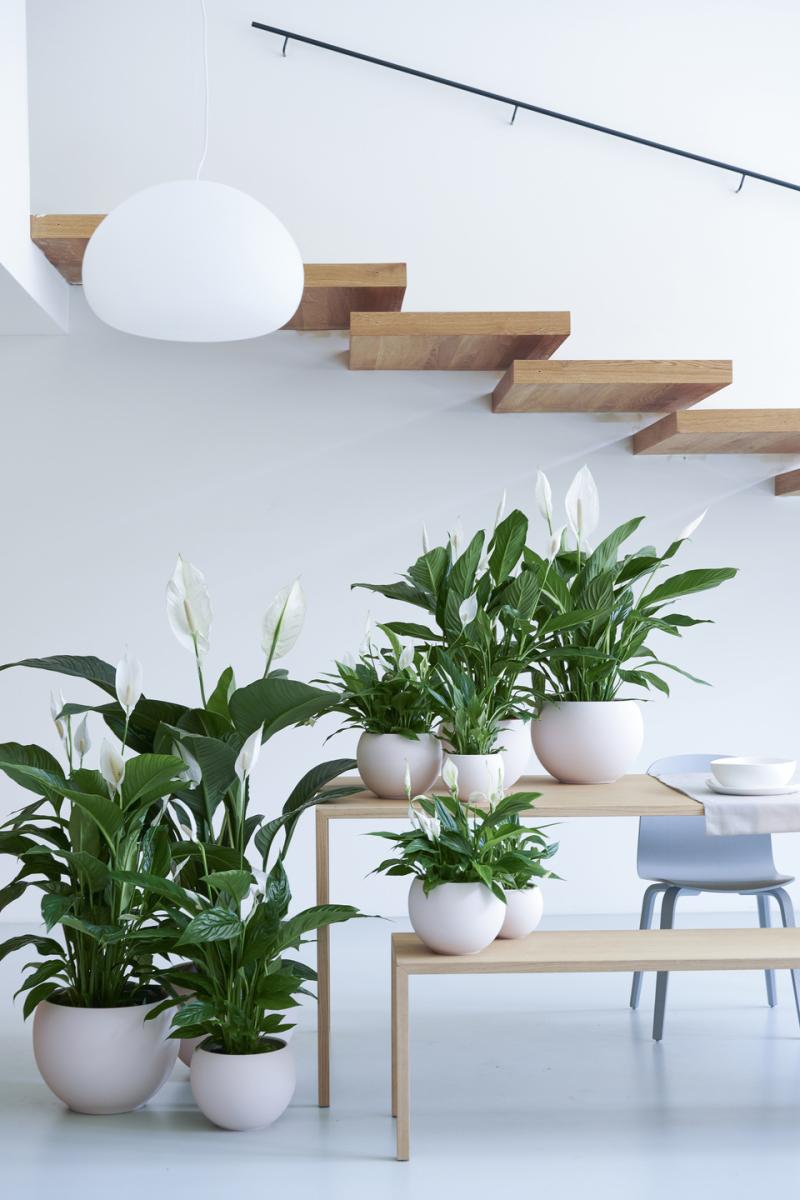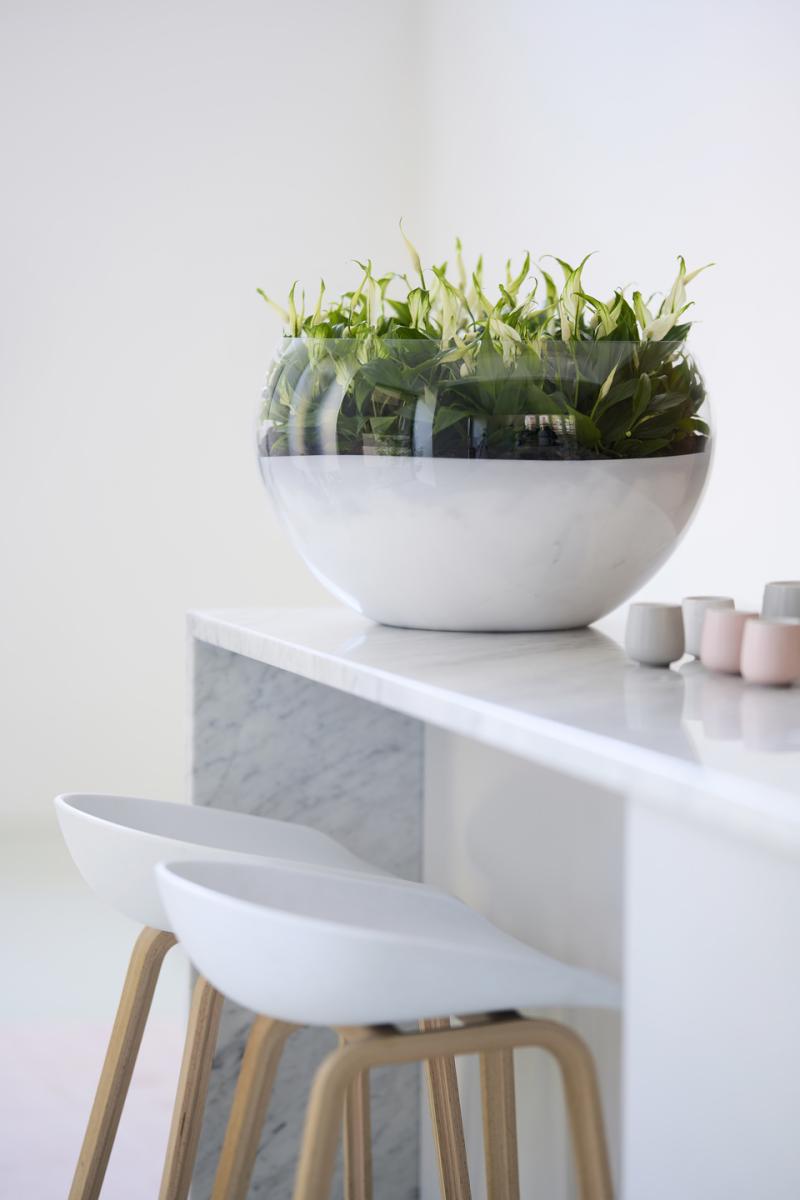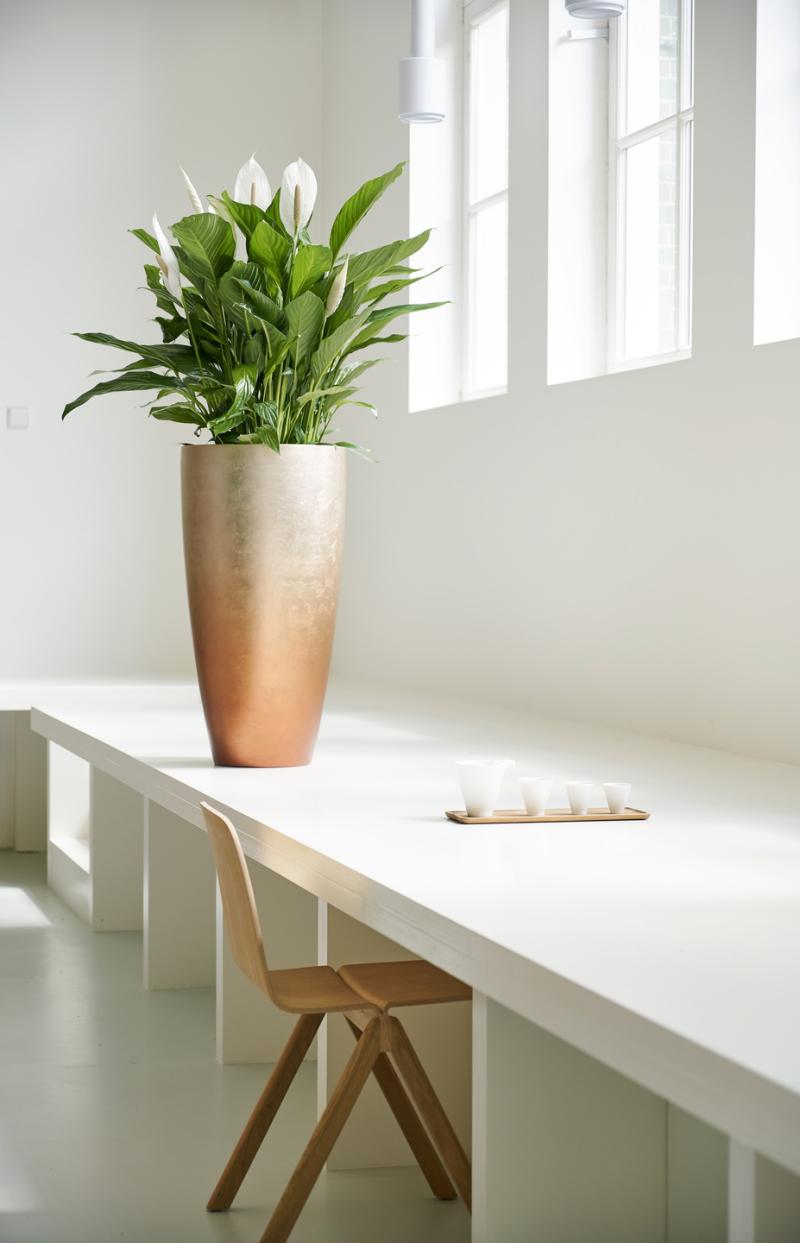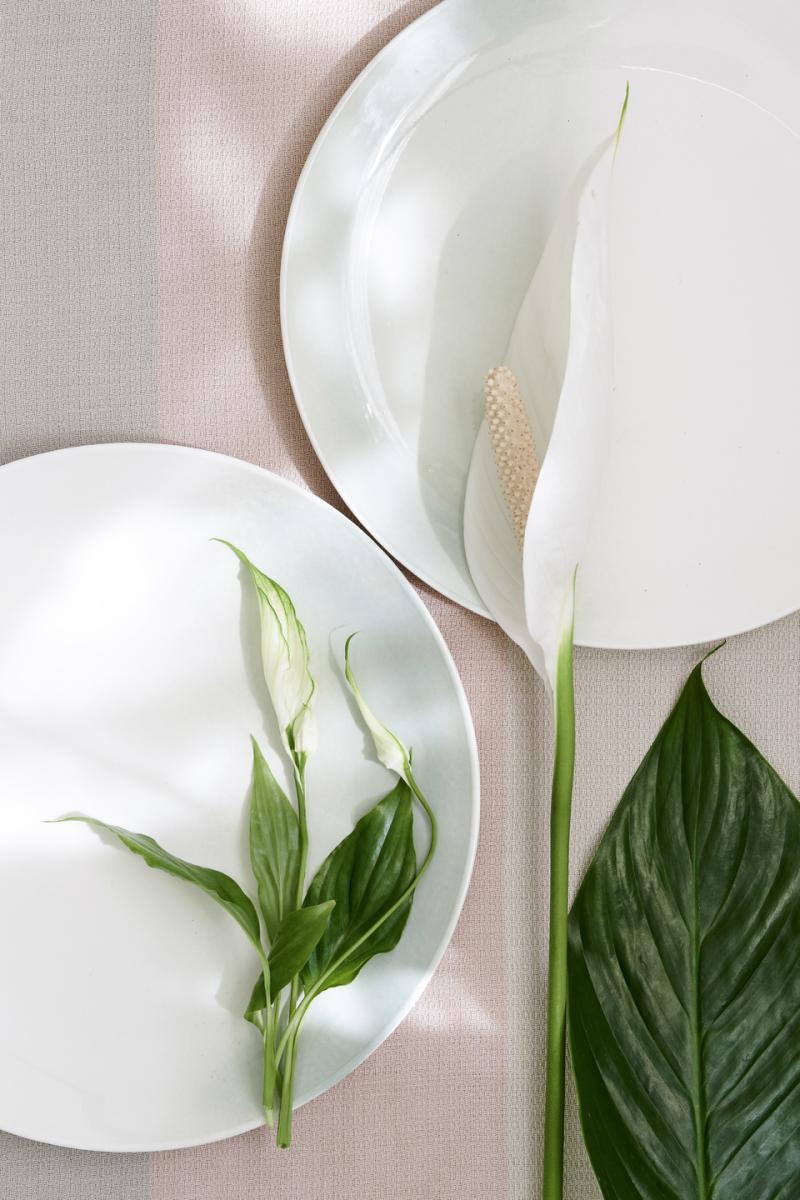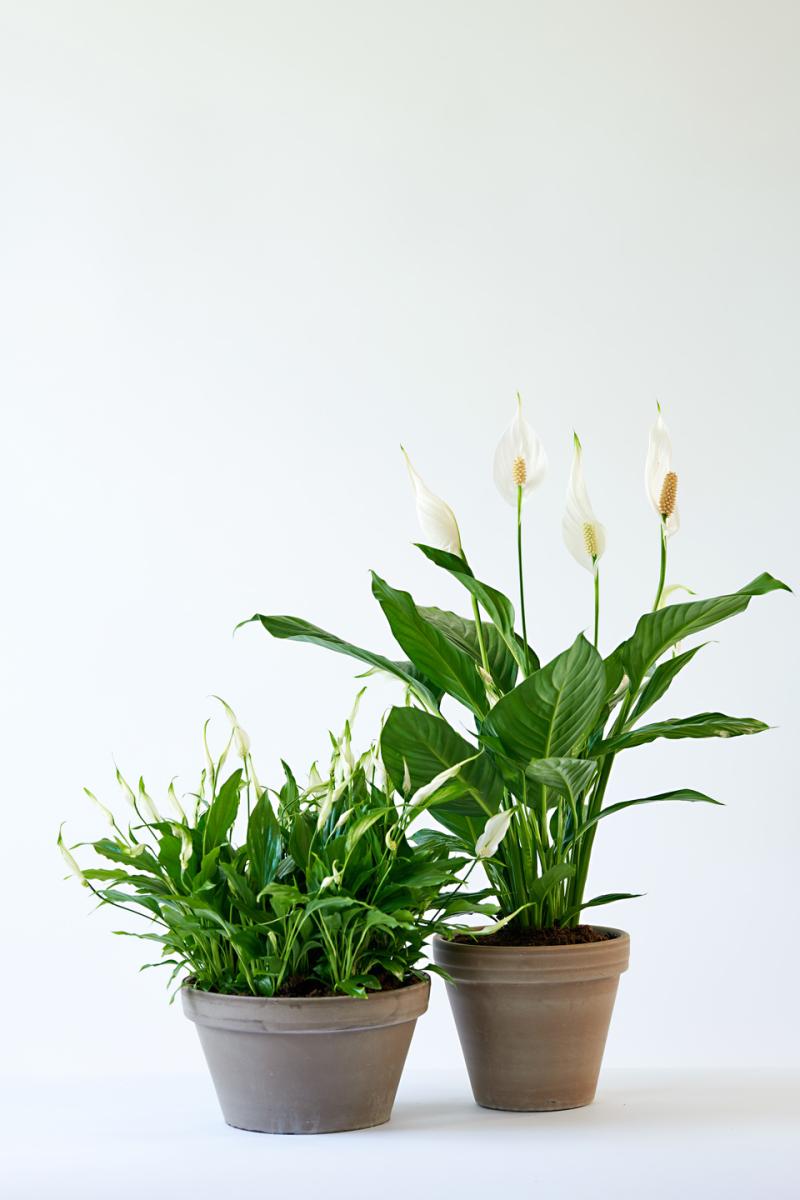Peace Lily: Houseplant of the Month May 2020
The peace lily, also known as Spathiphyllum, will be featured as the Houseplant of the Month in May. If you’d like to draw your customers’ attention to this houseplant, you can use the POS material that we have developed for you. This can be downloaded free of charge under the heading Downloads.
The story of the peace lily
The peace lily's official name, Spathiphyllum, is derived from the Greek words for spathe and leaf.
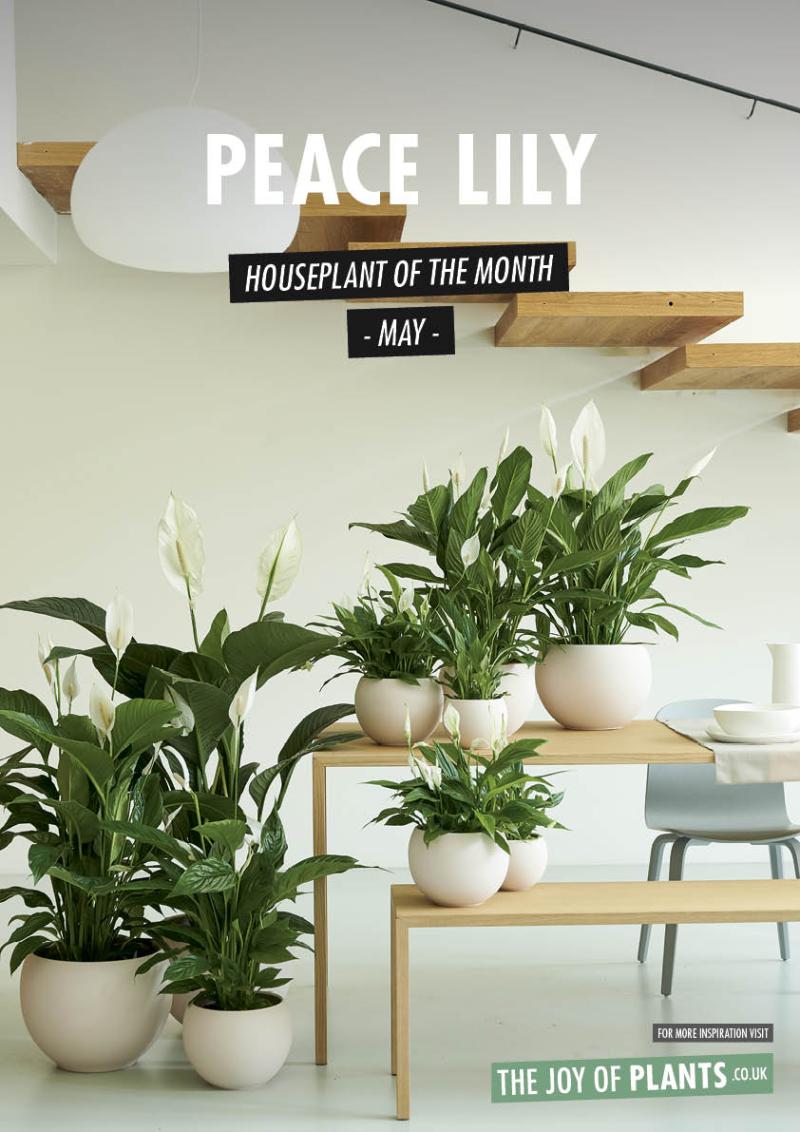
The peace lily originates from the tropical rainforests of Colombia and Venezuela. It’s a real shade plant that likes a warm, damp environment. The plant was introduced into Europe in 1870, and has enjoyed a rapid development since then. While there were only a few varieties derived from the walisii species in the 1980s, there are now a large number of cultivars.
What to look for when buying peace lilies
- Dimensions and appearance. When buying peace lilies we particulary look at the pot size, the diameter and thickness of the plant, the size of the spathe, the plant’s growth: compact or loose, the number of buds or flower stems per plant, and the ripeness.
- Health: It is also important that plants are healthy without pests or diseases.
- Damage: If the inflorescence or the foliage are damaged or flawed, this is often the result of shipping or storage.
- Foliage and flower: There can also be wilted flowers on the plant, or the plant may show yellow foliage. Spots on the leaves caused by cold damage or scorching by the sun are also possible. Check that there are virtually no other pests or diseases present during the sale phase.
- Moisture: The plant may sometimes droop because the potting soil is too dry.
Peace lily range
There are over 50 different peace lily cultivars, whereby the difference lies mainly in the size of the plant, leaves and flowers. The plant can almost be considered a foliage plant because of the attractive dark green leaves. There is one variegated variety. The flowers are almost always white flowers or sometimes slightly green, whilst recent cultivars have more or larger flowers. The number of flowers and size of the flower must always be in proportion to the plant’s foliage.
We also see plants with dyed inflorescences nowadays.
Care tips for consumers
The peace lily is an easy care product.
- The plant requires a light position, out of bright sunlight at around 18-22 °C.
- Regularly give the plant tepid water. If the leaves are drooping, the soil has dried out.
- The plant enjoys regular spraying with tepid water, and also appreciate plant food.
- Removing wilted flowers is a good idea.
- A winter rest period is required in order to get the flower to bloom for several years. The plant should then be placed in a light spot at a temperature of 15 °C for 6 to 8 weeks, after which it will flower vigorously again.
- The plant can also be placed in the garden or on the patio in the summer, but beware of bright sunlight.
Sales and display tips for the peace lily
Its air-purifying properties* make the peace lily very popular. This easy plant also has calming effects thanks to its simple flowing leaf shapes. Place it in a pot made of natural material, ceramic or (artificial) resin. The plant looks even more serene behind a matt or semi-transparent screen.
*In the Nasa Clean Air study, the peace lily stood out for its above-average air purifying qualities and has therefore gained extra popularity. However, during the times of the Covid-19 (Coronavirus) pandemic, we advise not to emphasize this property specifically as this can of course be sensitive or misinterpreted.
Images of the peace lily
You can download and use the images below free of charge if you credit Thejoyofplants.co.uk.
Instagram: @thejoyofplants
Facebook: @thejoyofplants
Twitter: @thejoyofplants
Peace lily poster:
You can download the posters free of charge using the links below.

